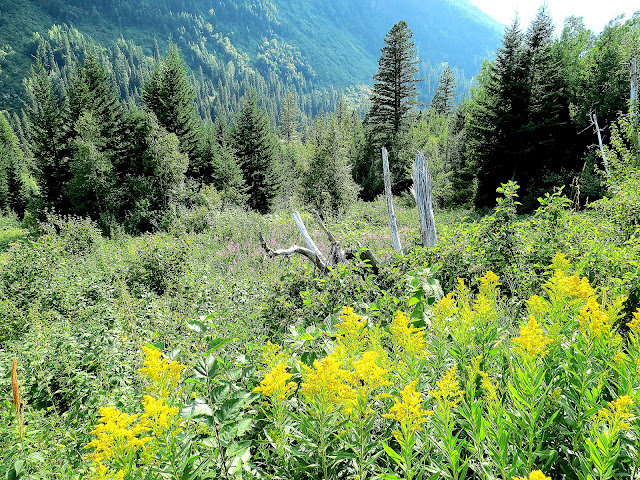This was our first time to visit Glacier National Park, a bucket list item for sure. We drove Mae, not Phannie, as vehicles longer than 21 feet are not allowed. There is a good reason; Phannie would still be up there, wedged in one of the hairpin curves on the two-lane Going to the Sun Road. This was no place for a big RV, for sure.
Since we weren't able to drive the Beartooth Highway last week--allegedly the most scenic in the U. S.--due to bad visibility from forest fires--this was certainly a worthy contender. The Going to the Sun Road, constructed between 1921 and 1932, traverses the park for 50 miles west to east. From this road, there are many turnouts where you can view a million acres of one of the most scenic areas of the northern Rockies. I'll let these photos speak for themselves:
We feel very blessed to be able to witness such beautiful surroundings in perfect weather here in northern Montana while our beloved Texas bakes in the July and August blast furnace. We could get used to this!
While we have certainly enjoyed this trip, we have not enjoyed the struggle to find RV parks with vacancies. We first noticed the problem two years ago when we had similar experiences on a much smaller scale. Since then, RVing seems to have mushroomed in popularity, the price of gasoline is low, and few new RV parks are being built. That has created quite an undersupply of RV parking spaces, and I have to expend many hours on the telephone searching for a parking spot everywhere we go. We can usually find a space for a night or two after much calling, but forget about longer periods than that. And we are at a point in our RVing that we don't like to do one- or two-nighters, in favor of spending several days at most locations. We also don't do boondocking, so that increases the pressure to find an RV park every night.
The problem has become so acute that we are abandoning our plans to travel farther west. We're going to make our way slowly down to Colorado to see if we can find some longer-stay places down there. We'll keep you posted on where we are, but we always have a good time, wherever that is!
Thank you, Lord, for this wonderful life; please forgive me if I don't appreciate it enough each day.
I would rather own little and see the world than to own the world and see little of it. --Alexander Sattler












































